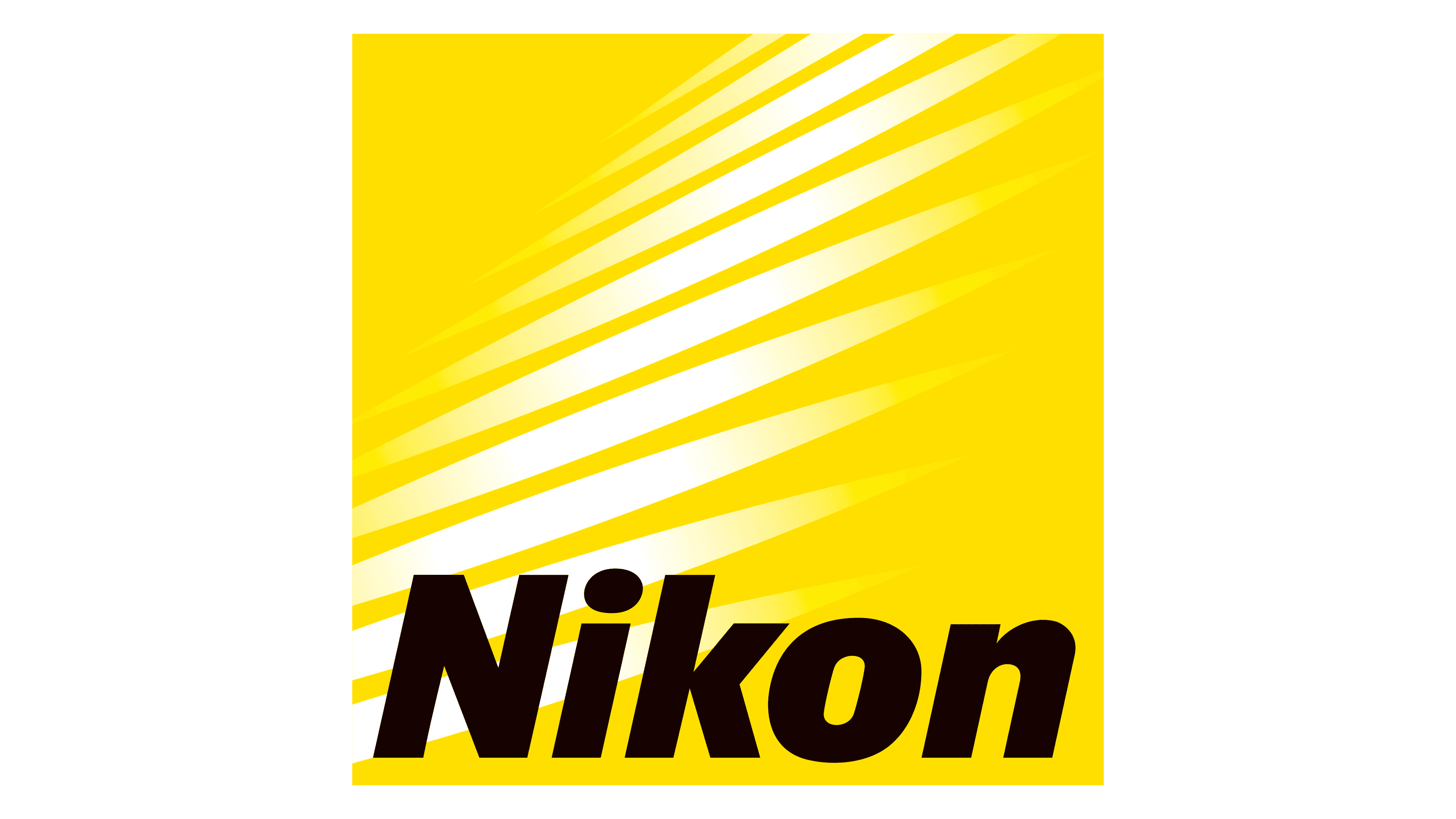Nikon Logo
Nikon Corporation is renowned globally for its expertise in optics and imaging products. The company was initially known as Nippon Kogaku K.K. and has been a pivotal player in the photographic industry. Nikon is currently headed by Toshikazu Umatate, serving as the President since 2019. This Japanese multinational corporation has made significant contributions to photography, with a reputation for quality and innovation in its range of cameras, lenses, and other optical equipment.
Meaning and history
Nikon was established in 1917 by three leading optical manufacturers merging to form a comprehensive, fully integrated optical company known as Nippon Kogaku K.K. Over the years, Nikon has made remarkable strides in the field of optics and imaging. A significant breakthrough came in 1948 with the introduction of the Nikon Model I camera, marking its foray into camera production. Nikon’s journey through the 20th and 21st centuries is marked by numerous innovations in camera and lens technology, playing a crucial role in the evolution of photographic equipment.
In the digital age, Nikon continued to excel with its digital SLR cameras, becoming a favorite among professional photographers. Their advancements in digital imaging technology and the integration of cutting-edge features in their cameras have kept them at the forefront of the industry. As of the current day, Nikon continues to innovate, adapting to the rapidly changing technology landscape. They have expanded into new realms like medical imaging and binoculars, maintaining their reputation for quality and precision in all their products.
What is Nikon?
Nikon Corporation is a globally recognized leader in optics and imaging. Its business primarily focuses on the production of cameras, camera lenses, binoculars, microscopes, and measurement instruments. Renowned for their quality and innovation, Nikon’s products cater to a wide range of consumers, from amateur photographers to professional media personnel. The company’s commitment to excellence in optical engineering and its adaptability to new technological advancements have been key to its enduring success and reputation in the global market.
1917 – 1930
This image presents a vintage logo, which is stylistically indicative of early 20th-century design. At the top, we see a hexagon-shaped emblem containing Japanese Kanji characters, which read as “日本光学工業株式会社” (Nippon Kogaku Kogyo Kabushikigaisha), signifying the original name of what is known today as Nikon Corporation. Below the Japanese text, the word “NIKKO,” an abbreviation of the company’s name, is inscribed in bold, capitalized Western characters. The overall design conveys a sense of heritage and authenticity, reflecting the long-standing history of the brand in the field of optics and imaging. The logo’s geometric clarity and contrasting typographic styles bridge the company’s Eastern origins and its global presence.
1930 – 1953
The image features a logo with a hexagonal border at the top, reminiscent of a camera’s aperture or perhaps the viewfinder of a classic rangefinder camera. Within this border, the words “NIPPON KOGAKU TOKYO”. This text is more straightforward and less stylized than the previous logo, indicating a shift towards a more global or international appeal. Unlike the previous emblem, which included Japanese Kanji, this version uses the Roman alphabet exclusively, suggesting an evolution in branding to cater to a broader audience. The design is clean, bold, and more aligned with the industrial and global expansion era of the 1930s. Comparatively, this logo moves away from the traditional Japanese script to a more universally recognizable Latin inscription, reflecting the company’s expanding international presence.
1953 – 1979
The image displays the modern Nikon logo, characterized by its bold, sans-serif typography. This logo is a stark contrast to the earlier versions, completely omitting any framing or additional graphics. The text “Nikon” is black, with a pronounced use of white space within and between the letters, reflecting the brand’s evolution towards minimalism and modernity. It’s a clear departure from the more complex logos of the past, emphasizing the company’s forward-looking approach and aligning with the mid-20th-century design trends of simplicity and functionality. This design represents the Nikon brand as it’s known today – a symbol of precision, quality, and modern photographic technology.
1965 – 1979
This logo showcases the Nikon brand name encased in an oval with a striking yellow background and a black border. The font is bold and sans-serif, similar to the previous version, but here the color contrast is much more pronounced. The use of yellow in branding can be associated with energy and innovation, which may reflect the company’s dynamic approach during the 1960s. This design is a marked evolution from the stark black-and-white logo, adding a pop of color and a more consumer-friendly appeal. The oval shape softens the overall look and gives the logo a more approachable, less formal demeanor. This particular styling could be seen as Nikon’s move to become more recognizable and memorable in the consumer market.
1979 – Today
The logo displayed is a return to minimalist design, featuring the word “Nikon” in a bold, dark font on a plain background. This design is stripped of any additional graphics or color that appeared in the previous yellow and black logo, emphasizing a sleek, modern aesthetic. It reflects a mature brand identity, focusing purely on the name without the need for extra embellishments. The typography is similar to earlier iterations, maintaining brand continuity, but the overall simplicity signals a confident brand that is recognizable without the need for a colorful presentation. This logo would be indicative of the design trends in the late 1970s, where straightforward and clean branding became more prevalent.
1988 – 2003
The logo displays “Nikon” in bold, black letters against a vivid yellow rectangle, flanked by two solid blue squares
on each side. This design reintroduces color into the logo, utilizing a tricolor scheme that is visually more striking than the previous monochromatic theme. The blue and yellow colors could symbolize stability and energy, respectively, suggesting reliability and innovation – key attributes of the Nikon brand. This color reintroduction, after the simpler black and white version, indicates a possible strategy to enhance brand visibility and recall. The symmetry and balance achieved with the blue squares add a geometric harmony to the design, which may reflect the precision and balance Nikon aims for in its products and services.
2003 – Today
This logo variant for Nikon features dynamic diagonal lines in varying shades of yellow, creating a sense of motion or a burst of light, which could symbolize creativity, energy, and the act of capturing moments. The bold, black letters of “Nikon” anchor the design firmly in the foreground, suggesting stability amidst the vibrancy. This design is a departure from the previous more static logos, infusing life and movement into the brand identity. It could be seen as a metaphor for the company’s innovation in capturing life’s moments, paralleling the action of light hitting a camera sensor. The choice of a gradient gives depth and dimension, contrasting with the solid colors of the past, and the overall effect is modern, fresh, and engaging.


















